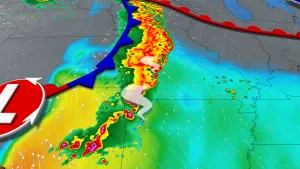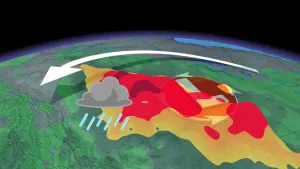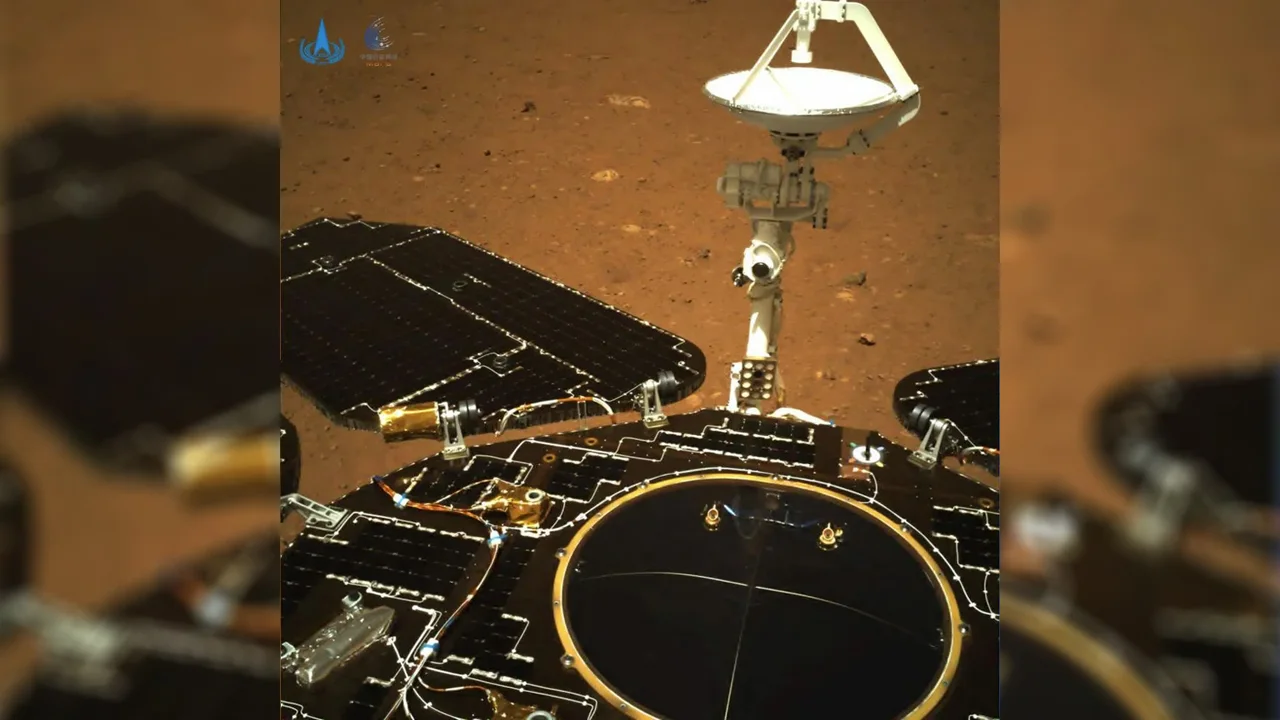
China's Zhurong rover successfully touches down on the surface of Mars
The robot population of Mars just increased by one, after China's Tianwen-1 mission landed a new rover at Utopia Planitia.
China has become the second nation to have landed a robot rover on the surface of Mars.
For over three months now, the Tianwen-1 spacecraft has been orbiting Mars after arriving there on February 10. According to the Chinese news agency Xinhua, early in the morning on Saturday, May 15 (Beijing time), the orbiter released a capsule, which plunged into the Martian atmosphere a few hours later. At 7:18 a.m. Beijing Time, the lander and its Zhurong rover were reported to have safely landed in the southern region of a vast Martian plain known as Utopia Planitia.
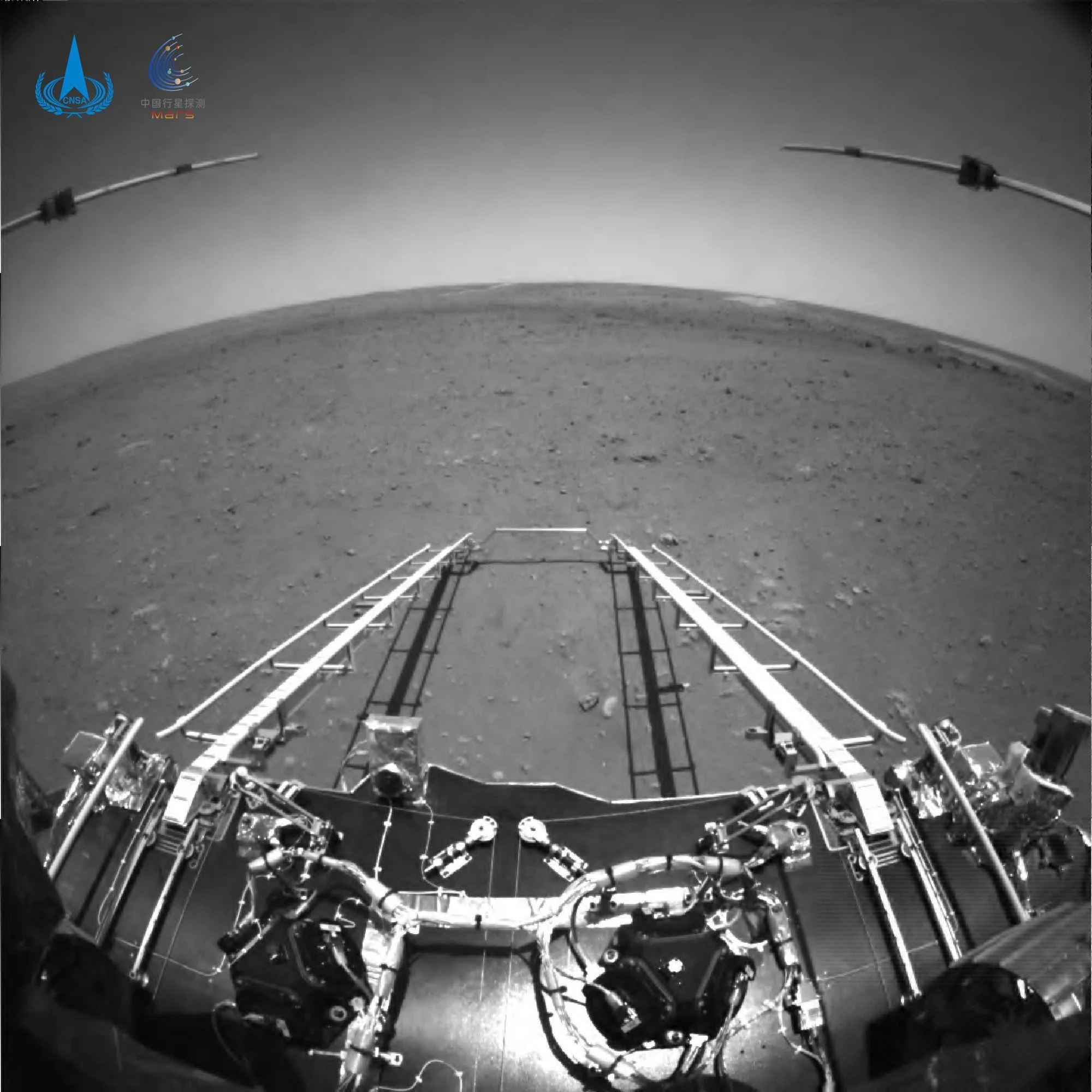
This image, sent back to Earth by the Zhurong rover, shows its view of the front of the lander, with its debarkation ramps extended, and the Martian terrain in its field of view. From the angle, this black and white image was likely taken by the rover's front hazard avoidance camera. Credit: CNSA
"The Mars landing of the Tianwen-1 mission has been a total success," Kejian Zhang, the head of China's National Space Administration (CSNA), announced at the Beijing Aerospace Control Center, according to Xinhua.
Xinhua stated that more than an hour had passed before mission control, here on Earth, could verify that the landing was a success. In addition to the communication delay with Mars, which is currently over 17 minutes long, the wait was apparently also due to the time required for the rover to deploy its solar panels and antenna to send a transmission to Earth via Tianwen-1 in orbit.
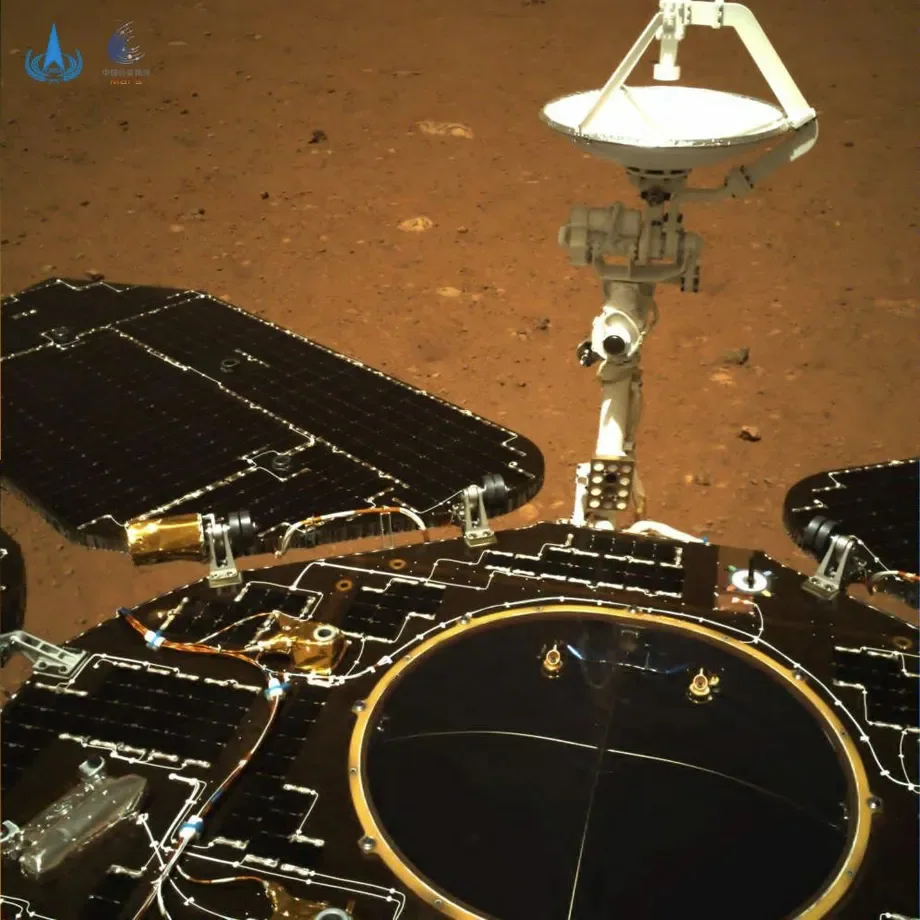
The Zhurong rover snapped this colour image of its solar panels and communications array with its navigational camera. Credit: CNSA
As with NASA's Perseverance rover and each mission before, landings on Mars are performed autonomously by the spacecraft. Due to the round-trip communication time lag with Mars — anywhere from 8.6 minutes to 42 minutes long — controllers on Earth cannot provide direct help during a landing if something goes wrong. So, a successful first landing by Zhurong is quite an accomplishment for the CNSA.
"Each step had only one chance, and the actions were closely linked. If there had been any flaw, the landing would have failed," Yan Geng, director of the deep space exploration department at Lunar Exploration and Space Program Center of the CNSA, told Xinhua.
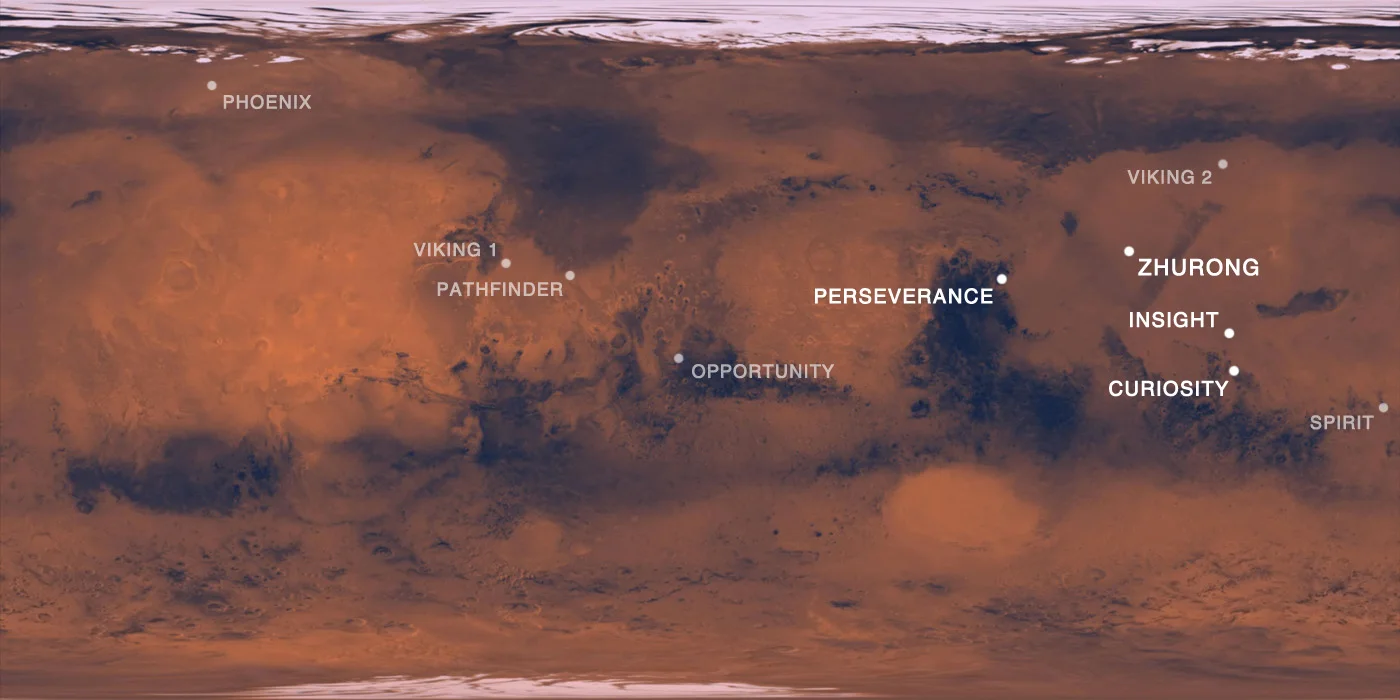
The landing location of China's Zhurong rover, in the southern regions of Utopia Planitia, is compared with current and past NASA lander and rover mission locations. Credit: NASA/CNSA/Scott Sutherland
Shortly after the announcement on May 14, Thomas Zurbuchen, the Associate Administrator for NASA's Science Mission Directorate, sent his congratulations for the mission's success.
The European Space Agency, which plans on landing their own Rosalind Franklin 'ExoMars' rover in 2023, also sent their congratulations to the mission team.
According to Xinhua, Geng said the rover would need about a week or so after the landing to assess its surroundings and perform the necessary checks and diagnostics before rolling off the lander onto the Martian surface.
Zhurong's mission is to spend at least 90 Martian days exploring its environment (just over 3 Earth months). It will study the geology, soil characteristics and distribution of surface ice in the area. It will send back data on the interior of Mars and its magnetic field. It will also use meteorological sensors to read the surface climate and weather.
When NASA sent their Spirit and Opportunity rovers to Mars, they too were only scheduled — initially — for 90-Sol missions. In total, the Spirit rover continued to explore for well over six years, though. The Opportunity rover persisted for even longer. It only ended its mission after more than 14 years due to one of the worst planetary dust storms we've ever seen on Mars. So, Zhurong could continue to rove about on Mars for years to come, exploring and returning scientific discoveries.







